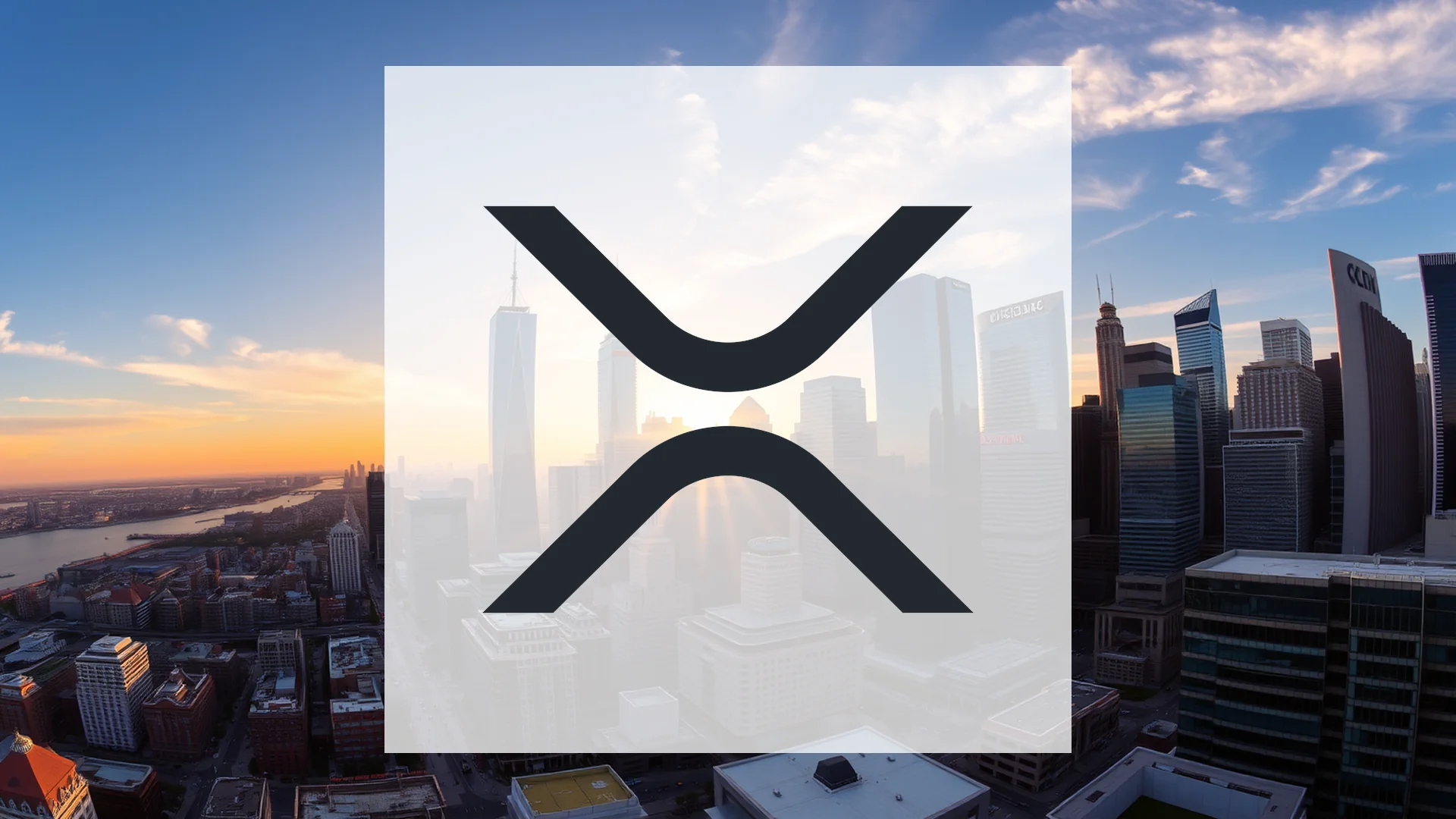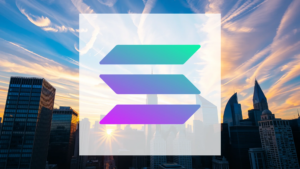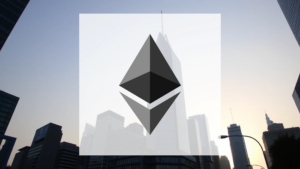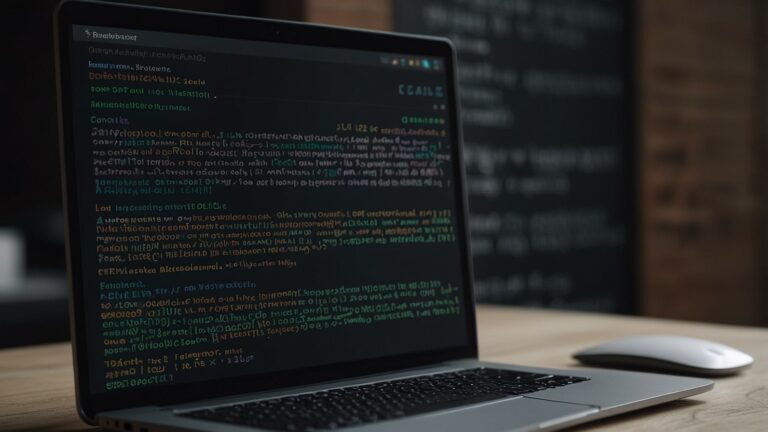Tether Takes Stake in Juventus Crypto Firm Eyes Sports Governance Role
In a surprising crossover between crypto and sports, Tether the firm behind the ubiquitous USDT stablecoin has revealed plans to nominate candidates to the board of Juventus Football Club and participate in an upcoming capital raise of the storied Italian team. With a newly acquired 10.7% stake in the club, Tether now stands as the second-largest shareholder behind the Exor holding group, which retains control with a 65% interest.
The move signals an ambitious expansion in which crypto players are seeking roles beyond finance and into mainstream governance. At Juventus’s annual shareholder meeting scheduled for November 7, Tether intends to advocate governance reforms, though the company has shared few details publicly so far.
The initiative suggests that stablecoin and blockchain firms are increasingly viewing traditional institutions including sports franchises — not just as vehicles for sponsorship or marketing, but as platforms for strategic investment and influence.
This development arrives amid a broader push by crypto firms to integrate into conventional sectors. In parallel, Tether is also reportedly considering launching a new US based stablecoin, which would comply with emerging federal legislation in the United States. The GENIUS Act enacted earlier this year is reshaping the regulatory environment for stablecoins by imposing stricter auditing, reserve, and oversight standards.
While skeptics may question the rationale of crypto firms entering the world of sports equity, the Tether-Juventus tie-up underlines how mature digital asset players are now flexing capital and governance ambitions in unexpected arenas. It also underscores that the boundary between Web3 and real-world infrastructure is becoming ever more porous.
Bitcoin Smashes Records as US Political Turmoil Fuels Crypto Inflows
In a striking turn of events, Bitcoin surged past $125,000, reaching a fresh all-time high as uncertainty around the ongoing U.S. government shutdown pushes investors toward alternative assets. The rally, which reflects a broader shift in sentiment, is being fueled by institutional money flowing into crypto markets seeking refuge from macro instability.
Over the course of last week, Bitcoin climbed more than 10%, extending its gains for 2025 and underscoring the growing appetite for digital assets in times of domestic political gridlock. The shutdown in its sixth day—has sown doubts about fiscal stability, prompting some market participants to treat Bitcoin as a hedge. Analysts note that Bitcoin tends to benefit when trust in traditional systems faces pressure.
Ethereum, not to be left behind, mirrored the momentum. The second-largest cryptocurrency hovered above $4,700, gaining ground on heightened optimism in altcoin markets. Smaller tokens also drew attention, with some nearing previous peaks, supported by renewed sentiment and spillover strength from Bitcoin.
Crypto-linked equities felt the lift, too. Shares of companies engaged in blockchain infrastructure and digital lending advanced strongly as markets bet that rising crypto valuations will dovetail with sector growth. Notably, blockchain-based lender Figure Technology (ticker: FIGR), which debuted publicly in September, saw its stock jump after bullish analyst ratings spotlighted its role in the tokenized asset space.
Despite the euphoria, caution is growing. The speed of Bitcoin’s climb raises concerns about overbought conditions and potential pullbacks should political developments shift or macro markets falter. Moreover, regulatory ambiguity in Washington still looms as an overhang. Still, for now, crypto bulls appear firmly in control if the shutdown persists, the trend may have strength to carry even further.
Anthropic Unveils Claude Sonnet 4.5: Revolutionizing AI Coding with Unprecedented Power
In a groundbreaking announcement, Anthonyptic has introduced Claude Sonnet 4.5, which is the most advanced coding model in the world so far. This most recent version, to be released on September 30, 2025, will be able to change the way developers write software, solve complex reasoning problems, and deploy intelligent agents.
With AI invading every nook and cranny of the tech sector, Claude Sonnet 4.5 found itself at the right place at the right time, as the need for dependable, robust tools in the software development industry has never been greater. As the coding efficiency, mathematical abilities and task processing are improved, the model creates a new standard of what AI can accomplish in real-world, practical settings.
The release is timed with an AI-based productivity tools boom, with businesses competing to automate repetitive tasks from employees and accelerate the development process. Anthropic, a company that prioritises creating safe and interpretable AI systems, highlights the fact that Claude Sonnet 4.5 does not only run faster or wiser: it is set to take on the complexity of creating software in modern times with a degree of autonomy that is on the edge of revolutionary.
First movers and observers of the industry are already hyping how it could bring advanced programming to a democratic process, allowing elite-level code to be available to a wider audience of professionals.
Important Characteristics that Spurred the Coding Revolution
The core component of Claude Sonnet 4.5 consists of a set of functionalities specifically designed to help developers cope with the challenges of the modern software environment. The major improvement is the introduction of the enhanced Claude Code interface, which now has smart checkpoints.
They enable users to save progress when the task is incomplete and be able to easily move back to past states, even when in an iterative development process. The model, combined with an updated terminal interface, provides a more user-friendly setting in which commands and real-time debugging can be performed.
To people who are already using AI as a part of their workflows through APIs, Anthropic has brought about context editing, which allows dynamic updates to conversation history without losing the thread.
An additional memory tool also gives the model the ability to store long sessions, thus it is the best match to support building complex agents that recall user preferences and project history through multiple interactions. This is especially disruptive with reference to enterprise applications, in which AI-assisted workflows can be used to save hours in the development timelines due to continuity.
The conversational platform, Claude Apps, has also been modified to allow the execution of direct code and the generation of files in a chat. Spreadsheets, presentation slides, or even complete documents can now be created on the fly by the developers, and it is difficult to distinguish between ideation and implementation.
The introduction of Claude for Chrome extension, which was previously in limited beta, is a major move towards integrating AI into browsers so that workflows that are web-based can be easily accessed.
Completing the toolkit is the Claude Agent SDK, which is a developer-friendly framework allowing access to the same underlying infrastructure behind Claude Code. This SDK allows developers to create specialised AI agents to do specialised tasks, such as automated testing or automating code reviews.
Best-in-Class Performance and On-the-Job Effectiveness
The only thing that makes Claude Sonnet 4.5 so high is its performance dominance in terms of rigorous performance metrics. The model scores the highest on the SWE-bench Verified benchmark, the gold standard of AI evaluation of problem-solving in real-world software engineering problems.
It also completes an eye-opening 61.4% on OSWorld, a tough test of computer interaction tasks trying to replicate human-like computer interaction and manipulation in digital worlds.
High-level code improvement, in addition to code, is reflected in reasoning and domain knowledge. The model performs well in finance, law, medicine and STEM, where mathematical calculations and logical inferences are key.
To give an example, it can break down complicated algorithms or model financial processes with less error than its predecessors, due to tuned training on large and high-quality datasets. These benefits are a result of the iterative nature of work by Anthropic, which involves a combination of huge computational power and human intervention in order to make results creative in addition to being accurate.
In reality, this will reflect itself in concrete productivity improvement. Software developers in a mid-sized firm who tested the model claimed that it was able to reduce debugging time on migration of legacy code by 40 per cent, and independent developers have praised that it is capable of generating boilerplate code that follows best practices without requiring much prodding. With remote and distributed teams becoming the new normal, a tool such as Claude Sonnet 4.5 may help people to close the knowledge gap, allowing junior engineers to punch above their weight.
Comparison with the competition
Claude Sonnet 4.5 does not merely compete in the hyper-competitive AI industry–it dominates. General-purpose intelligence has been advanced by other competitor systems, such as the GPT series of OpenAI and the Gemini system by Google, but Anthropic has an advantage due to its emphasis on coding specificity.
Compared to larger models that tend to need heavy fine-tuning to complete dev work, Claude Sonnet 4.5 is designed to provide cleaner code that requires fewer executable lines out of the box. Its ability to build agents is more dynamic than the competition in multi-step work processes, and it is important to retain context in a long-term perspective.
Critics point out that benchmark win is a convincing factor, but it will have to be adopted in the real sense based on ease of integration and cost effectiveness. However, by focusing on safety, the model can be used in regulated industries that fear uncontrolled AI usage since it operates in the stricter Anthropic AI Safety Level 3 guidelines.
Proactively, classifiers within the system block dangerous applications, e.g. those that involve chemical or biological threats, with increased accuracy and one that minimises false alarms.
Being Accessible, Pricing and a Taste of the Future
In line with the spirit of broad access of Anthropic, Claude Sonnet 4.5 is launched on all major platforms, the Claude apps, API endpoints, Claude Code environment and developer console.
It is priced similarly to its predecessor, Claude Sonnet 4, and thus, there are no obstacles to those who already have the previous version to upgrade. This price-effectiveness–together with adjustable levels to companies of any size makes it a feasible alternative to more expensive proprietary systems.
To make it all interesting, Anthropic is also previewing a five-day research titled Imagine with Claude, which is available exclusively to premium subscribers. This mode of experimentation allows the normalisation of software prototypes in real-time with no existing code libraries to promote pure creative exploration by the AI. It is a preview of AI in the future, where models will share the authorship of entire applications based on high-level specifications.
Greater Tech and Society Implications
The release of Claude Sonnet 4.5 is reverberating beyond code editors. In a world where software forms the foundation of all things, such as autonomous cars and targeted medicine, a more powerful coding AI would speed up innovation in every industry.
Startups may develop MVPs in a few days, as opposed to weeks; big techs work on massive codebases to make them efficient and secure. It furthermore creates concerns regarding job displacement, though–will AI coders replace human ones, or enhance them into human supercharged partners?
Anthropic safety-first ethos is a reassuring one, ethically speaking. The company focuses on transparency and harm reduction, which is why the tendency to raise questions about the misuse of AI can affect the industry standards. Models such as this would be examples of responsible development as regulators across the world examine generative tools.
In perspective, Claude Sonnet 4.5 does not end but is a starter. As it continues to release even more ambitious pieces in the future, with whispers of even more ambitious releases, Anthropic is establishing itself as a leader in reliable AI.
To the developers, it is a call to arms: use this power to create the future, line of code by line. With September 30, 2025, slipping behind us, one thing, at least, comes out clearly, namely, that this model is not simply writing code, but it is rewriting the laws of creation.
TikTok Dodges US Ban: Trump Brokers Surprise Deal with China Amid Tech Tensions
In an eye-catching geopolitical twist that caused shock to Silicon Valley and beyond, President Donald Trump declared a $11th hour deal with China on September 26, 2025, to avert the looming ban on TikTok in the United States.
The agreement, the result of intense virtual negotiations between White House officials and Chinese representatives, requires the greater localisation of data and American control over the work of the algorithms of the application itself, which in fact rescues the 170 million American users of the platform.
The resolution is a rare win in U.S.-China tech diplomacy, but it raises new concerns regarding national security, content moderation, and the future of short-form video in a divided online world, just days before a court-imposed shutdown deadline.
The news, given through a midday tweet by Trump himself, was that Tik Tok would remain but in our terms! Great Deal with China–America First! started a maniacal response. Stocks of the parent company of TikTok, ByteDance, increased by 15 per cent in Hong Kong, whereas U.S. social media shares declined as an additional competitor entered the market.
Relief to creators and businesses that depend on the viral engine of the app, the news is a respite; a temporary reprieve with overtures of concealed danger to privacy advocates. With the dust yet settling on this Friday, the tech world tries to come to terms with what a tradeoff between economic pragmatism and long-term suspicions may portend.
The Brink of Ban: A History of Security and Sovereignty
What has followed since the disruptive rise in 2018 are some ups and downs in the American journey of TikTok as the subject of scrutiny by the regulators. The Douyin application, developed by ByteDance in China, soon attracted the attention of Gen Z through its addictive dances, memes, and e-commerce features, reaching more than a billion users worldwide.
However, its Chinese connection sounded alarms in Washington, where legislators lamented the possibility of spying through harvesting user information. In 2020 and 2024, bills were passed through Congress, and Trump signed the Protecting Americans from Foreign Adversary Controlled Applications Act, which provided a divestiture deadline of January 2025, or a nationwide blackout would happen.
As of mid-September 2025, the clock was ticking more. The federal courts denied the cases filed by ByteDance, citing the evidence of national security due to leaked intelligence reports claiming that data flows to Chinese servers. Purchasers Oracle and Walmart also pulled out under antitrust obstacles, and the future of the app remains uncertain.
Producers organised movements of protests under the hashtag # SaveTikTok and flooded Capitol Hill to demand action on how lost revenues were affecting their livelihoods – some influencers claimed 6-figure incomes were under threat. Meanwhile, other competitors such as Instagram Reels and YouTube Shorts increased their poaching, draining dollars in ad revenue and algorithms optimised to recreate the magic of TikTok For You Page.
Open the eleventh-hour diplomacy. According to sources near the negotiations, the Trump team, using the semiconductor and EV trade negotiations, demanded that China give in. Still hurt by export restrictions on rare earths, Beijing responded with threats of transparency.
The outcome of this negotiation is referred to as the TikTok Accord and stipulates that ByteDance must ring-fence the user data of U.S. residents in Oracle-controlled data centres, which the Federal Trade Commission and independent cybersecurity auditors will audit on an annual basis.
Algorithms that are coded as long and have been labelled by critics as the pro-China code would now pass through the scrutiny of a bipartisan congressional panel after every quarter, and such alterations could be vetoed by the congressional panel in its entreaty to pro-China propaganda.
Deal Details: Belt and Sylvia Strings
Fundamentally, the treatise is a master of stratification of defence. The profiles, videos and interactions of U.S. users will no longer cross the Chinese borders; instead, they will be redirected to secure servers in Virginia and Texas. ByteDance invests $2 billion in AI compliance technology in America, including watermarking to identify deepfakes and audits of recommendation engine bias.
Also, in reference to content warriors, the deal requires human moderators (50% of whom are U.S.-hired) for misinformation removals, focusing on election interference and spikes in hate speech that afflicted the 2024 cycle.
But strings abound. Failure to comply initiates automatic geoblocking that is accompanied by fines reaching 10 per cent of global revenue. In return, China allows the sale of some U.S. apps in its market, such as Threads by Meta, which critics call a tech-for-data swap.
It was heralded by Trump as the art of the deal reborn and was attributed to his personal relationship with Xi Jinping. But sceptics such as the chair of the Senate Intelligence Committee, Mark Warren, threaten lapses in enforcement: ‘Audits are just as good as the eyes of the auditors–and Beijing has a track record of smoke and mirrors.’
The technological aspect is also a prickly one. The competitive advantage of TikTok is its homegrown AI that is trained on petabytes of swipe information to achieve a virality prediction with spooky accuracy. Delivery of glimpses of that black box might result in copycats or, even worse, reverse-engineering by competitors.
Privacy advocates such as the Electronic Frontier Foundation lament that the deal did not provide user opt-outs, stating that it causes the concept of privacy to become institutionalised as surveillance capitalism in disguise.
Global Ripples: Beijing to Brussels
There are shockwaves of the Accord that go well beyond the U.S. In Europe, where TikTok is under investigation under the Digital Services Act, regulators are considering such agreements- India, which banned the application in 2020, may even change its mind.
The eSafety Commissioner of Australia described the action as a blueprint to have balanced borders, whereas Brazil considered the introduction of tariffs on Chinese technological imports as a retaliatory measure towards alleged favouritism.
In the case of ByteDance, it is a lifeline of latitude. In an internal communication, CEO Shou Zi Chew pledged to work even harder on building trust, as he declared an increase in content and engineering jobs by 10,000 in the U.S.
However, there are rumours in Shanghai that internal forces at work: the concessions are seen by some hardliners as a surrender, which could offer encouragement to domestic competitors such as Kuaishou. With creators returning in large numbers, Wall Street analysts expect TikTok to recover to $15 billion by 2026 through its U.S. ad revenue.
TikTok has its heartbeat in the creator economy, which will flourish once again. 60% of the youth demographic on the platform could afford to relax, and by evening, the viral challenges were back on.
Brands such as Nike and Chipotle, which froze campaigns in uncertain times, reallocated budgets with a focus on tie-ins during the holidays. Nevertheless, the spectre of volatility remains–data retroactivity was a concern to users; they needed to know what was uploaded before.
Expansive Tech Landscape: Teaching in Leverage
The point here is a growing fault in the worldwide technology: the tension between the borderless movement of innovation and the sturdy grip of sovereignty. The deal made by Trump resembles previous salvos, such as the Huawei truce in 2019 and the WeChat carve-outs.
It is undeniable that economic interdependence can override open bans. The moral of the story, to Big Tech, is to diversify or perish. The new Zuckerberg at Meta, who has just got off with antitrust lawsuits, is said to have lobbied to lift the ban to sustain competitive mayhem.
Scholars predict the spillover of AI regulation. Will OpenAI or Anthropic do the same, should the algorithms at TikTok be subjected to scrutiny by the U.S.? The Accord also has a provision of emergent tech alignment, which can accelerate bilateral standards of generative models.
Climate technology observers see similarities: in the same way that rare earth transactions have eased the U.S.-China relationship, so may information diplomacy. Left critics, such as Rep. Alexandria Ocasio-Cortez, viciously attacked the deal as corporate welfare to spies and insisted on worker protections for ByteDance gig moderators. Right-wingers such as Sen.
Tom Cotton termed it as appeasement 2.0, promising to hold oversight hearings. Bipartisan discomfort unites around the issue of youth safety: Addictive features of TikTok are linked to increasing levels of adolescent anxiety, according to CDC statistics, and age-gated features have been requested.
Voices of the Frontlines: Creators and Coders Weigh In
Reactions separate the scroll in TikTok. The most followed creator, Charli D’Amelio, who has 150 million fans, posted a duet with the save: Back to business–let’s make magic! The app was proclaimed as a digital democracy saved by smaller voices, such as educators in the countryside, who made use of the app to teach.
Tech insiders were additionally more reserved. An anonymous former ByteDance engineer disclosed the scramble: “An engineer at the company said, speaking anonymously, that they rewired overnight, by dawn, U.S. servers hummed, and the true test of it all was cultural fit.
Analysts such as Wedbush Dan Ives perceive some silver in this: “This stabilises the ad duopoly, which releases capital to do moonshots. But Wedbush peers think they are overstepping the mark: “One slip and it’s ban again. Mod ideas that include the idea of networked data pods through blockchain, perhaps, are being discussed on forums to secure against flipping to fiat in the future.
Horizon Watch: Stability or Simmering Standoff?
With September 26 in the rearview mirror, the TikTok Accord is a wilting ray of hope in the Technological Conflict between the U.S. and China. Hurdles to implementation–Q1 2026 first audits, pilot test on election content. The triumph of the walled gardens might become normalised by global apps, which encourage hybrid modes where the code is cosmopolitan and the data is home.
Failure? The internet is being broken back into ideological silos. Swipe on, swipe algorithms, and swipe diplomats. The truce in the world theatre of tech titans is called to today to remind us: we can ban things easily, but we cannot make deals like the boldest. It lives or falls apart, but either way, this accord remakes the principles of digital interaction in the case of viral videos.










